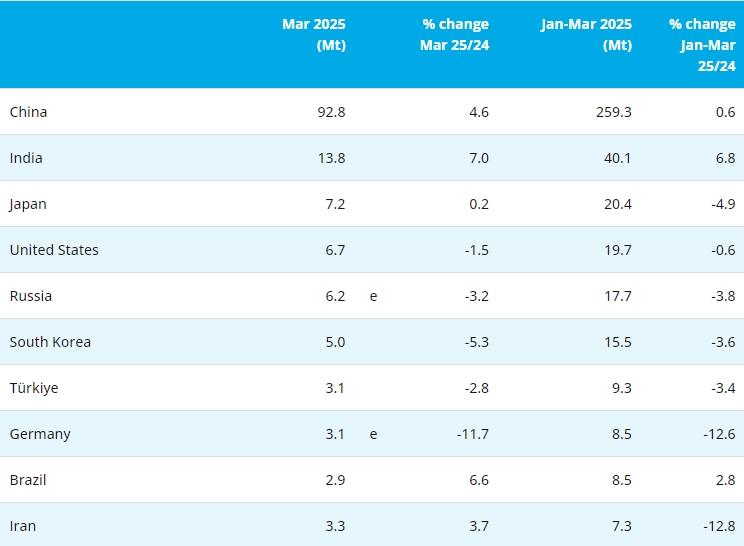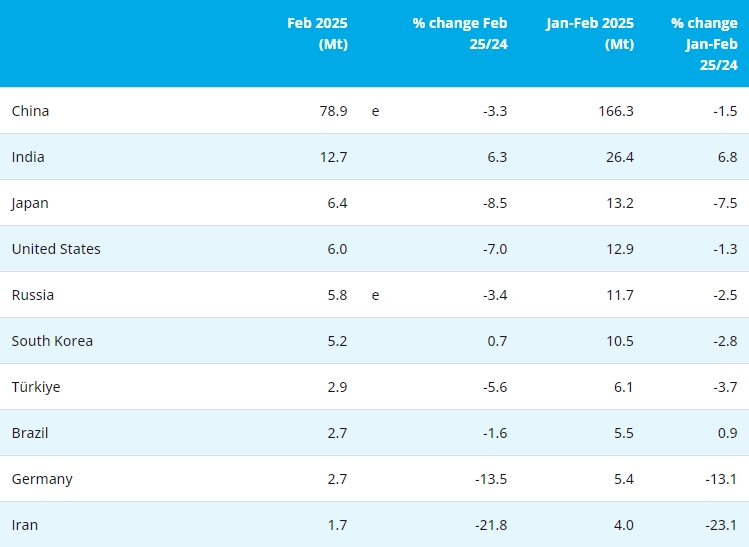【Ferro-alloys.com】Diversified miner BHP has reported a 50% increase in profits fort the half year ended December, as higher commodity prices reigned, but has warned of costs increases in the near future.
Profits from operations for the half year reached $14.8-billion, while underlying earnings before interest, tax, depreciation and amortisation reached $18.5-billion, up 33% on the previous corresponding period, at a margin of 64%.
The miner said on Tuesday that profits from operations increased as a result of higher sales prices across our major commodities, near record production at Western Australian iron-ore and higher concentrate sales at Spence, as well as favourable exchange rate movements.
This was partially offset by the impacts from planned maintenance across a number of our assets, expected copper grade decline at Escondida, significant wet weather at Queensland coal and inflationary pressures, including higher fuel, energy and consumable prices.
Underlying attributable profit for the interim period was up by 77%, from $6-bilion to $10.6-billion.
“BHP had a strong first half. We achieved our third consecutive fatality free calendar year. We mitigated the impacts of Covid-19 and significant adverse weather events to turn in a solid operational performance, particularly from our flagship Western Australian Iron Ore business,” said CEO Mike Henry on Tuesday.
“We have announced an interim dividend of $1.50 per share, bringing total shareholder returns to more than $22-billion over the past 18 months. Our record interim dividend was supported by our reliable operating performance and continued strong markets for a number of our products.
“We have made strong progress on the execution of our strategy. We unified the BHP corporate structure with strong support from shareholders, we announced and advanced the proposed merger of our petroleum business with Woodside, we progressed our divestments of certain coal assets and we announced the final investment decision for our Jansen Stage 1 potash project. We have also secured further growth options in future facing commodities.
“BHP is well positioned for the future. We are building on our strong foundations and capital discipline to reshape our business and grow long-term value for shareholders and other stakeholders,” he told shareholders.
Attributable profit for the half-year reached $9.4-billion, which included an exceptional loss of $1.2-billion relating to the impact of the Samarco dam failure of $821-million as well as an impairment of US deferred tax assets no longer expected to be recoverable after the petroleum merger with ASX-listed Woodside.
Meanwhile, capital and exploration expenditure in the half year reached $3.7-billion, including maintenance expenditure of $1.1-billion, minerals exploration of $0.1-billion and petroleum expenditure of $0.8-billion.
Capital and exploration expenditure of approximately $6.5-billion is now expected for the 2022 financial year, which is $0.2-billion lower than previous guidance predominantly due to favourable exchange rate movements.
At the end of December, BHP had two major projects under development, the $2.97-billion Jansen mine shafts project and the $5.7-billion Jansen Stage 1 project.
BHP on Tuesday warned shareholders that In the near term, volatility in the operating environment is expected to continue.
“Industry wide inflationary pressure has been pronounced, lifting and steepening operating cost curves and challenging timely project delivery. Many commodity-linked uncontrollable costs have moved noticeably higher, in some cases to record highs. Labour costs have increased materially due to localised shortages of both general and skilled workers. This partly reflects regulatory constraints on movement across international and state borders,” the miner said.
“We expect cost headwinds due to supply bottlenecks to remain challenging in the 2022 calendar year, with only tentative signs of easing by the end of the period. As the actual recognition of costs tends to lag developments in prompt pricing, these pressures are expected to continue to impact on our cost base in the following calendar year.”

- [Editor:zhaozihao]



 Save
Save Print
Print Daily News
Daily News Research
Research Magazine
Magazine Company Database
Company Database Customized Database
Customized Database Conferences
Conferences Advertisement
Advertisement Trade
Trade














 Online inquiry
Online inquiry Contact
Contact

Tell Us What You Think